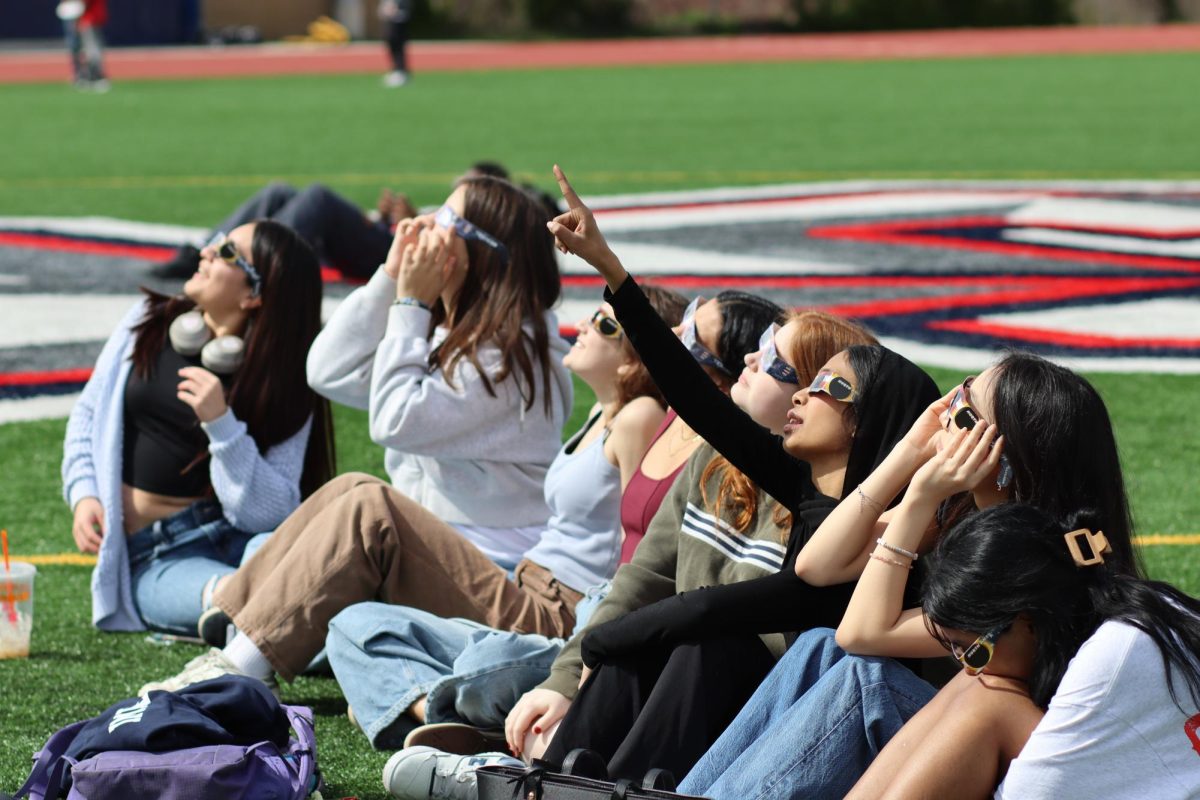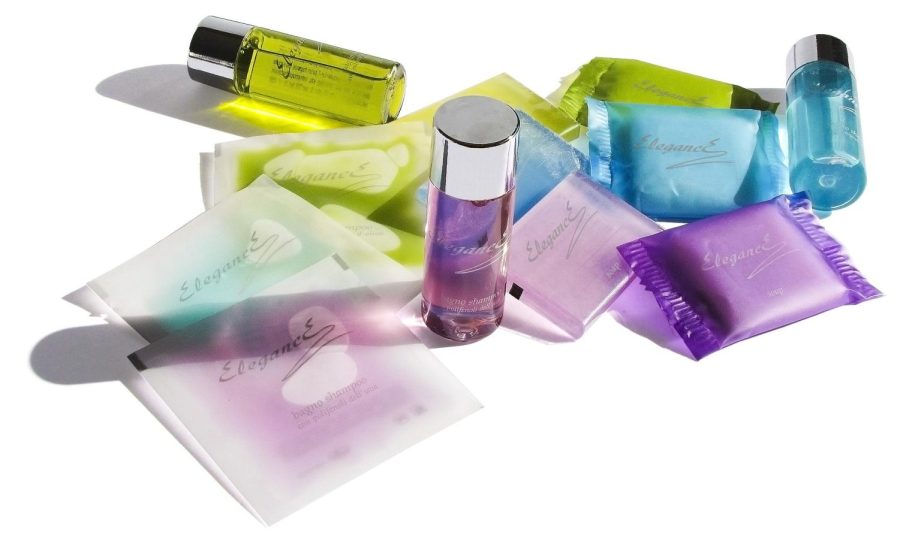Student-recommended skin care

As social media tips and recommendations on skincare have grown popular, so too has this advice spread in high schools. Constant exposure to the “glass skin” and pretty faces of online influencers can be credited for the booming popularity of skin care amongst teenagers, Harrisites included.
“My skin care routine just makes me feel good,” said Junior Shranaya. Referring to influencers on TikTok who inspire her, she added, “I think their skin looks really pretty, and I love how it looks in pictures.”
Finding the products that really work can be difficult, though, due to the plethora of choices available. Here, we’ve arranged a few popular recommendations from students in three basic categories (cleansers, moisturizers, and sunscreens) and explain how their ingredients impact their effectiveness.
Cleansers: Environ Botanical Infused Sebu-Wash Gel Cleanser and Curel Foaming Facial Cleanser
Facial cleansers help prevent skin conditions like acne and itchiness by removing the build-up of oil, dirt, make-up and dead skin cells from your pores. They also improve facial hydration by managing your skin’s pH levels.
Some of the ingredients that you should look for in facial cleansers are salicylic acid (SA) and retinol. SA is particularly beneficial for getting rid of acne; it penetrates the hair follicle and oil gland, unplugging blocked pores and reducing oil production in the glands. Retinol takes a different approach; the particles go all the way to the dermis and neutralize free radicals, which increases the release of elastin and collagen. These two proteins reduce fine lines, wrinkles and large pores, as well as increase skin elasticity, giving your skin a firm and plump look.
Skin types differ, so a cleanser should be selected based on your personal needs; additionally, you may also need to check if you are allergic to any of these ingredients. According to many Harrisites interviewed, not even two people use the same cleanser.
Silga uses the Environ Botanical Infused Sebu-Wash Gel Cleanser, which is particularly helpful for acne-prone and oily skin. It contains a combination of chemicals that help wash away surface oil and grime that could increase the appearance of blemishes, leaving the skin feeling clean and fresh. However, the inclusion of alpha hydroxy acid (AHA) and beta hydroxy acid (BHA) makes your skin more sensitive to the sun, increasing your risk of sunburn. If you use this product, you’ll want to use SPF and wear protective clothing.
Junior Camille Lin uses the Curel Foaming Facial Cleanser. The wash is pH balanced, fragrance-free and colorant free. Like all the others, it rids your pores of debris, but its cleansing strategy is centered around reenforcing the ceramide already in our skin, which holds our skin cells together in the upper most layer of the epidermis. This barrier retains moisture, keeping the skin hydrated and smooth. “It’s very gentle… on all types of skin, oily too. [And it’s] well priced, about 20 dollars for a bottle,” Camille said.
Moisturizers: CeraVe Moisturizing Cream and Aloe Vera
After applying cleanser, it is always best to follow up with a layer of moisturizer. One of the most highly acclaimed moisturizers at the school is the CeraVe Moisturizing Cream.
Senior Anusha Ramjanam said, “I use CeraVe moisturizer [and their] night moisturizer. I love using CeraVe because the products are light and they don’t feel heavy on my face or clog my pores.”
The moisturizer’s lightness comes from emulsifiers and skin-identical ingredients. The emulsifiers,sodium lauroyl lactylate and ceteareth-20, mix water and lipids to smoothen the texture of the moisturizer. Ingredients such as ceramide AP, ceramide NP, and ceramide EOP, phytosphingosine, and glycerin mimic naturally occurring elements already found within the skin, balancing them to help keep skin cells connected, aid in intercellular communication, and ultimately provide a strong and healthy complexion. These are particularly beneficial to those with sensitive skin, as they are familiar to your face and, therefore less likely to result in a negative reaction.
Freshman Ananna Ali takes a more natural approach to moisturization. She said, “I usually freeze my aloe vera and ice my face with it so it prevents acne. It’s really helpful. I put a tissue before applying the iced aloe vera because putting ice directly on your skin isn’t good.”
Aloe vera is known for its anti-inflammatory properties and can be used to hydrate the skin. Applying aloe vera with ice also helps to calm skin that may be stressed. It has properties that kill bacteria and can help to control and reduce acne.
However, not all aloe vera products are made the same, and you shouldn’t select products just because aloe vera is touted as one of the ingredients; products that contain alcohol will stop the aloe vera from hydrating the skin. In addition, using aloe vera along with exfoliants such as glycolic acid and BHAs can aggravate any pre-existing irritation on the face.
Sunscreen: Super Goop Sunscreen SPF 40
Sunscreen is another vital step in skincare; it protects the skin from ultraviolet radiation that can cause sunburns and skin cancer through the alteration of the DNA in skin cells. The lowest minimum UV protection rating recommended by dermatologists is an SPF of 30.
Junior Tenzin Chemi, who uses the Super Goop Sunscreen SPF 40, said, “[The sunscreen] is tinted and good. It’s the first step in my makeup process.”
Like most sunscreens, Super Goop sunscreens include homosalates, an organic filter that absorbs UV rays, that is made from carbon and octisalate, an ingredient that enables sunscreen to provide long lasting protection. It also contains avobenzone, which serves as a shield from UV rays, and niacinamide, which helps clear skin by removing acne and eczema. Besides keeping the skin healthy, it also contributes to cosmetics; the ingredient, mica, for example, creates a glowy, glassy look when paired with titanium dioxide and iron oxide.
Your donation will support the student journalists of The Classic. Your contribution will allow us to purchase equipment, support our extracurricular events, celebrate our staff, print the paper periodically, and cover our annual website hosting costs.

Shayra is a Junior at Townsend Harris High School. She spends her free time hand-knitting, reading, and journaling. She hopes to study medicine in the...

Aastha is a junior at Townsend Harris High School. Her favorite activity is watching horror movies at night. She also enjoys going to theme parks.




































